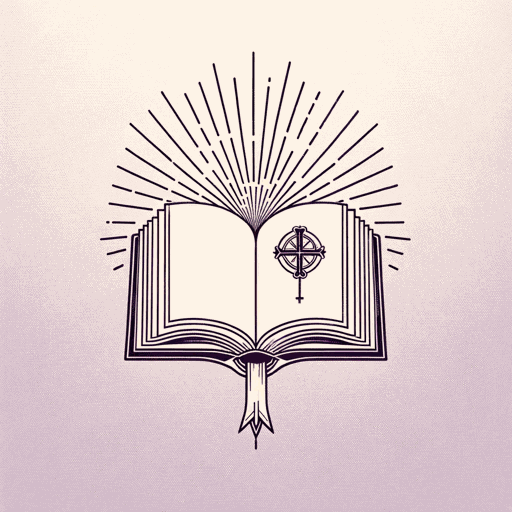50 pages • 1 hour read
John Henry NewmanThe Idea of a University
Nonfiction | Book | Adult | Published in 1873A modern alternative to SparkNotes and CliffsNotes, SuperSummary offers high-quality Study Guides with detailed chapter summaries and analysis of major themes, characters, and more.
Summary and Study Guide
Overview
The Idea of a University is composed of several sets of works by John Henry Newman. Later a cardinal of the Roman Catholic Church, and canonized as a saint in 2019, Newman was a leading intellectual and ecclesiastical figure in the British Isles in the mid-19th century, having gained prominence while serving as an Anglican priest and writer in Oxford in the 1830s and 40s. His reflections in Tracts for the Times (1833-1841), which helped launch the influential Oxford Movement, eventually led him to convert to Roman Catholicism. By the 1850s, when the material for The Idea of a University was produced, he was arguably the leading English-speaking intellectual in the Catholic world.
The Idea of a University is composed of two parts: “University Teaching” and “University Subjects.” The first, “University Teaching,” is generally considered the core of the book, consisting of nine discourses delivered in Dublin in 1852 during the process of establishing the Catholic University of Ireland. Newman would return to Dublin in 1854 as rector for the university, where he served for nearly four years. During this time, he published several essays and delivered lectures to various departments of the university, and 10 of these occasional pieces became the material for the second part of The Idea of a University.
The foundation of the Catholic University of Ireland came at an important historical inflection point for Roman Catholicism in general and for religious affairs in the British Isles in particular. Roman Catholic universities throughout Europe had been in a process of secularizing during the 19th century. Modern secular thought, partly driven by developments in the academic approach to science and religion, was increasingly viewed as a threat to traditional Catholic doctrine. Within the British Isles, Anglicanism’s long domination, empowered by the English crown, had only recently begun to allow more freedoms to Catholic citizens. There, however, as elsewhere, universities were beginning to abandon a traditional focus on theology as a core subject of a liberal education. Newman’s book addressed this milieu by advocating for the necessity of theology’s place in the university and by combining a rigorous educational model with a firm commitment to Catholic doctrine.
The original nine discourses from 1852 are gathered in Part 1 of the book, titled “University Teaching.” These discourses make the case for a specifically Catholic model of higher education and to elucidate the relationship between theology and other branches of study. All nine discourses, delivered as a series of talks, build on one another and provide a detailed picture of Newman’s conception of a university: Such a place should be devoted to the pursuit of universal knowledge and thus must include scholars and students devoted to every branch of academic study. Theology, far from being excluded, must retain a place in a university education. Since theology is the science that studies the ultimate cause of all things, it has bearing on every other science. To remove its influence in a university would lead to fragmentation of the other sciences, Newman warns. The goal of the university is to present the unified whole of knowledge to the student so that, whatever their own field of study might be, they come away with a broad intellectual formation that is capable of incorporating new knowledge, seeing its bearings on other knowledge, and judging its meaning and relevance rightly.
Part 2 of the book, titled “University Subjects,” is less cohesive than the first part, but it contains several important expressions of Newman’s thought on education and religion. It includes explorations on how to define “literature” and a canon of classics, both of which hold continued interest for literary studies. Several of these pieces also provide a strong argument for the value of a classical education—learning ancient languages and studying classical literature—in producing the kind of mental formation that Newman sees as the goal of education. The final pieces of Part 2 include many of Newman’s most significant reflections on the relationship between science and religion, many of which have retained their relevance in the 20th and 21st centuries.
The Idea of a University has long been treasured by Roman Catholics for its unswerving allegiance to the faith in a way that they find both intellectually compelling and rhetorically inspiring. Because of its influence, Catholic student organizations at universities across the world bear the name of its author: “Newman Societies.” The book’s appeal now goes far beyond Catholic circles. The Idea of a University has come to be regarded as a standard text of the conservative intellectual tradition and an authoritative voice for the merits of the classical model of education.
Some of the book’s material (the first nine discourses) was originally published in 1852, but the full version of the text, which would come to be regarded as the standard version, did not appear until 1873. The 1873 edition included the 10 added pieces of “University Subjects” and finalized the division and naming of the earlier discourses, though Newman continued to make slight emendations to the text in subsequent editions, until his death in 1890.
This study guide references the 1982 edition from the University of Notre Dame Press (part of the Notre Dame Series in the Great Books), edited by Martin J. Svaglic.

